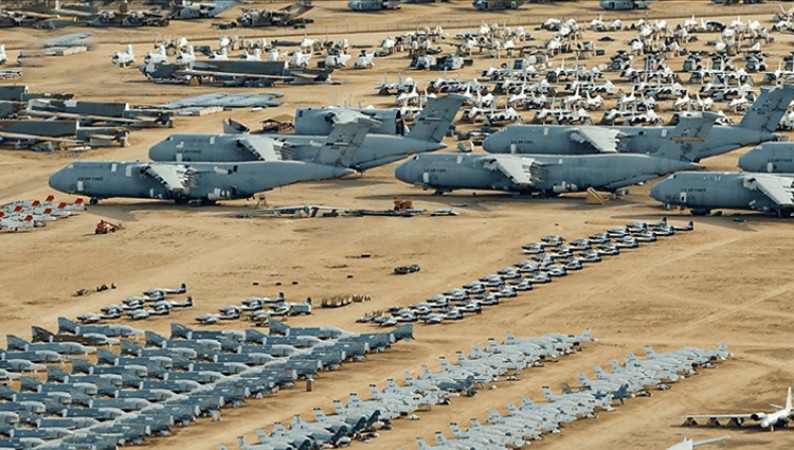
Washington: For the Air Force to test its first hypersonic weapon, an air-to-ground missile that can travel at five times the speed of sound, it had to overcome a significant hurdle.
Military officials have stressed the importance of being the global leader in hypersonic defense technologies, especially given that Russia and China are also developing them. The Department of Defense has recently invested hundreds of millions of dollars in hypersonic research and development.
"They're completely new to everybody," Ian Boyd, a professor of aerospace engineering at the University of Colorado, said of the new type of weapon during a podcast in August. And that is part of the issue he raised. It is challenging to defend against them.
Also Read: Korea wants to assist Vietnam in upgrading its economy
At Barksdale Air Force Base in northwest Louisiana, home of the service's 2nd Bomb Wing, validating the loading and unloading process is the first step toward deploying the AGM-183A hypersonic system, according to Air Force officials recently approved it was done.
The weapon, also known as an air-launched rapid response weapon (ARRW), is an air-to-ground missile that is propelled by a rocket motor and has a maximum speed of Mach 8, or eight times the speed of sound. There is more. It is designed for the B-52 Stratofortress for transport.
master Sergeant. Caleb Nolan, armament systems manager for the Air Force Global Strike Command in Barksdale, described the test as "a demonstration of the far-reaching capabilities of the B-52, and now it extends its combat capabilities even further with the ARRW system."
The Air Force's first air-launched hypersonic weapon, the ARRW, enables combatant commanders to hit time-sensitive targets more quickly than ever before, according to a statement from Air Force Global Strike Command.
Also Read: Oil prices rose after the Russia price cap pact, with world shares mixed
After receiving a nearly $500 million contract from the Pentagon to build the ARRW, Lockheed Martin started working on it in earnest in 2018. A year later, preliminary tests of the weapon were carried out.
The Air Force is now free to move on to the next challenge in the process, live-fire testing, which is projected to begin before the end of 2022. According to the Air Force, the ARRW should be operational in less than a year.
Although the Pentagon has been aggressive in taking a leadership role in advanced warfare technology, the United States has yet to deploy a modern hypersonic weapon. China and Russia are also investing heavily in the development of hypersonic weapons. In fact, according to Russia, the Kinjal hypersonic missile was already in use during the conflict in Ukraine. The US military has not publicly denied that claim.
The Carnegie Endowment for International Peace, a Washington-based think tank, declared in a statement posted on its website that "a new arms race is underway." It has never been more important to have a plan in place to control the race towards these weapons, which combine speed, maneuverability and long range.
The advantage of a hypersonic weapon is its long range. According to military officials, the missiles can easily travel further. Once released, the ARRW is estimated to have an operational range of 1,000 miles.
Another advantage is that hypersonic missiles fly higher in the sky, where the air is thinner and their height makes them harder to defend against. They have a quality that other missiles do not have due to their unusual mobility, which allows them to move up, down and side to side.
Defense officials warned that Beijing is on track to have 1,500 nuclear warheads by 2035 and that its hypersonic development poses a "consequential and systemic challenge" to US national security and defense in the Pentagon's annual China Military Power Report released last week. A few weeks ago, the Pentagon's National Defense Strategy expressed concern about Russia, naming China as the United States' main military rival.
Also Read: Morocco benefits financially and strategically from the shock of the fertiliser supply
In his podcast, Boyle said, "I would be more concerned about China [than Russia]. Basically, if someone fired hypersonic weapons in the West today, we wouldn't know until it was too late that these weapons were upon us. "China really is an international force to be reckoned with right now.